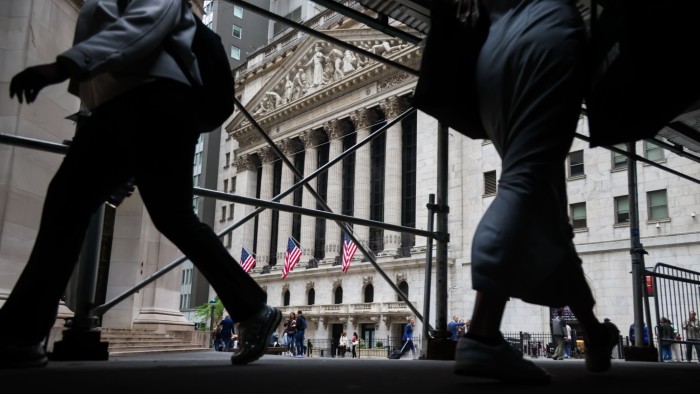Unlock the Editor’s Digest for free
Roula Khalaf, Editor of the FT, selects her favourite stories in this weekly newsletter.
The writer is the founding partner of Verdad Advisers and the author of ‘The Humble Investor’
US equity markets have had a banner run in the years since the Covid-19 market panic. Yet despite the S&P 500 surging nearly 95 per cent over the past five years, US private equity firms are struggling to profitably sell the portfolio companies they have accumulated — nearly 12,000, according to research by Cherry Bekaert. At the current exit pace of 1,500 companies a year, it would take nearly eight years to clear the existing inventory.
Investors in private equity have seen distributions of capital collapse from the typical 30 per cent of net asset value down to only about 10 per cent of net asset value, according to Bain. And frustrated investors in funds — most notably Yale and Harvard — are turning to the secondary market to sell stakes, while talk of “over allocation” and “above-target” investment in the asset class is spreading.
The most proximal cause of this roadblock is the excessive exuberance of the 2020-22 period in private markets, when valuations were booming and interest rates were still hovering near zero. Private equity groups attempted to sell everything they had bought before 2020 into this frothy market, and then turned around and paid massive prices for new deals. Deals between private equity managers peaked at about 45 per cent of total exits in 2022, according to Harvard Law School research.
And now we are experiencing the hangover from this deal binge. The pre-2020 deals that did not sell during this period are generally deeply flawed, while the new deals initiated in the period were done at such high valuations — and with business models that anticipated interest rates remaining low — that exiting them at a profit today is very difficult.
As exits have dried up, deeper problems with the asset class are being revealed. Private equity was the apple of most allocators’ eyes in the 2010s. Fundraising seemed to rise inexorably and transactions between private equity managers became an ever larger share of exits. But the allocations started to outpace the size of the market. By my estimate, the addressable market for private equity — the companies it could buy — is only about one-tenth the size of the public equity market. Yet a 40 per cent allocation to privates, roughly where Yale’s endowment is, has become increasingly commonplace. This represents a massive overallocation to a very illiquid asset class.
With private equity fundraising experiencing a sharp drop in 2024, according to PitchBook data, and further slowing so far in 2025, this process is starting to reverse. Less fundraising leads to fewer exits as there are fewer buyers within the industry, which, in turn, results in lower valuations and worse returns. Then allocators reduce allocations even further.
This would all be fine if there were other natural buyers for the private equity inventory of assets. But while the bigger US stocks have thrived, small and microcap shares have not performed as well. Since 50 to 60 per cent of private equity deal value falls squarely within the microcap range of public markets, according to Ropes and Gray data, the initial public offering market is at present not an attractive option for many companies.
Financially, private equity-backed companies are under strain. The industry’s operating model relies heavily on leverage. As of 2024, private credit yields on leveraged buyout deals have climbed to 9.5 per cent, reports PitchBook. The vast majority of this debt is floating rate. I estimate that ratios of debt to ebitda for many portfolio companies now exceed eight times. And a significant share of these businesses are cash-flow negative. This is the logical result of an environment where cheap debt enabled overpriced deals and masked operational fragility. And because these businesses are already overburdened with debt, they cannot buy growth either. Moody’s reports default rates for private equity-backed companies nearing 17 per cent, more than double non-private equity firms.
Private equity sponsors are playing for time by refinancing with new structures or selling their companies into so-called continuation funds to hold the assets. But kicking the can down the road can be a dangerous strategy if high-priced debt continues to erode equity value or economic growth slows further.
For years, private equity could do no wrong. But now it is starting to look like a massive money trap. It has underperformed the S&P 500 over one, three and five years, according to McKinsey.
The consensus on private equity is being quietly, but decisively, rewritten. The question now is not whether the model is being broken. It is whether the exit is wide enough for everyone trying to leave.
https://www.ft.com/content/3b69b835-2d19-4251-9112-a723220bc932


